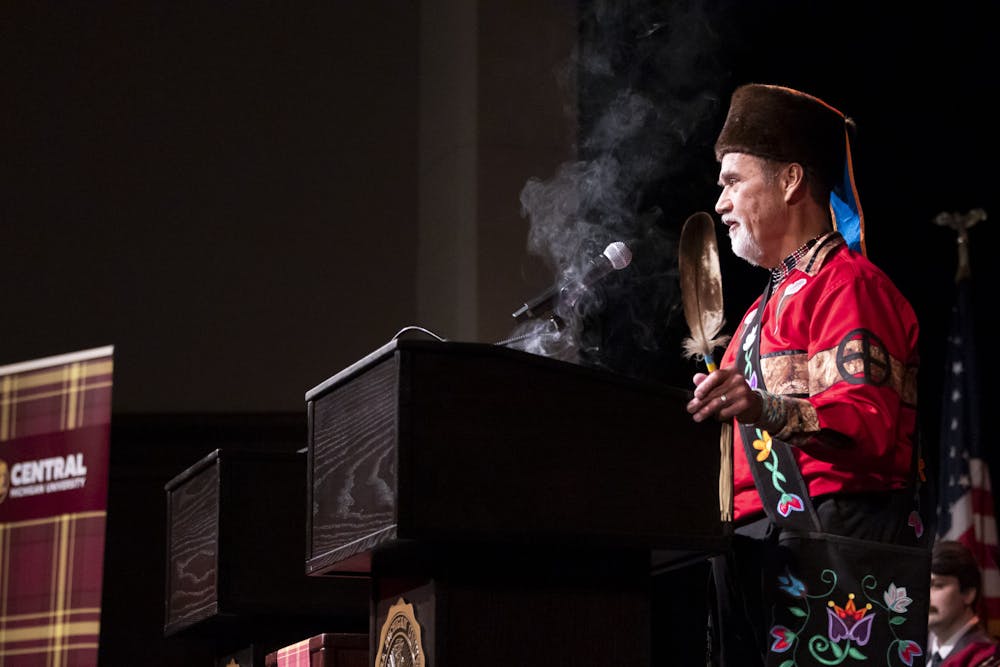Column: Honoring the Saginaw Chippewa Indian Tribe
Celebrate your CMU Chippewa pride while respecting the area's culture and history

A tribal elder of the Saginaw Chippewa Indian Tribe, Joseph Sowmick, performs a smudge ceremony during the Presidential Investiture in the Plachta Auditorium of Warriner Hall, Friday, April 4, 2025. Sowmick explains that the medicine from the western door, Muscogee, is a "purification for our people." (CM-Life | Alivia Cranick)
Central Michigan University has a long-standing partnership with the Saginaw Chippewa Indian Tribe, which is what allows the university to use “Chippewa” as its nickname. As part of the agreement that the university has with the Tribe, there are practices in place to honor both the Tribal history of the land and the preservation of the Tribe’s culture.
The university rests on part of the Saginaw Chippewa Indian Tribe’s reservation. When attending events around campus, students will often hear a land acknowledgement. The acknowledgement recognizes the land the event is hosted on as the ancestral land of the Council of Three Fires, otherwise known as the Anishinaabe people.
The land acknowledgement highlights the collaborative relationship between the Tribe and CMU, and serves as a reminder of the challenges the Tribe has faced because of colonization.
The university’s Office of Indigenous Affairs also provides students with resources to help educate themselves about the Tribe CMU represents.
Among these resources are guidelines for the usage of the Chippewa name and related symbols. For example, it’s inappropriate to shorten the name Chippewa unless saying “Fire Up Chips!”
Sporting events are a common space where the nickname is put to use, but on the playing field as elsewhere on campus and in the community, there are ways of honoring the Chippewa Tribe and ways of disrespecting it.
CMU Office of Indigenous Affairs’ website reads that students shouldn’t attempt to recreate war paint patterns with face paint, chant phrases with Native American origin, or make the “tomahawk chop” motion while cheering on CMU teams. Doing so misrepresents the culture of the Tribe and sends a demeaning message about the Tribe’s heritage.
According to the site, the Saginaw Chippewa Indian Tribe are a peaceful people that were primarily hunters and gatherers. Donning war paint or feathered accessories is considered disrespectful and inaccurately represents the Tribe.
As CMU students, we have a responsibility to educate ourselves about the land we live and learn on, and about the Tribe it belongs to. I encourage incoming students to step outside of their comfort zones and learn about this culture that may be unfamiliar to them.
If you want to learn more about the Tribe while on campus, visit the Office of Indigenous Affairs in Bovee University Center, Room 110C. For a more in-depth experience, take a trip to Mount Pleasant’s Ziibiwing Center of Anishinabe Culture and Lifeways, 6650 E. Broadway St., which enlightens visitors to the rich culture, heritage and history of the Great Lakes’ Anishinaabe People.
Staff Reporter Cristin Coppess is a is a rising sophomore majoring in photojournalism.






